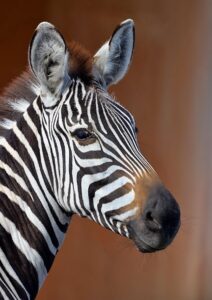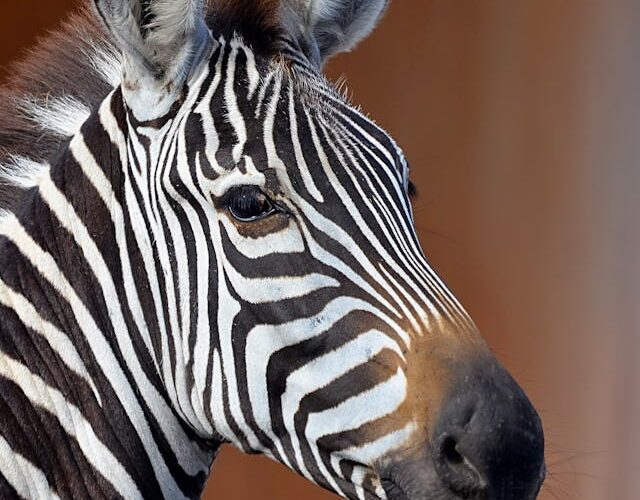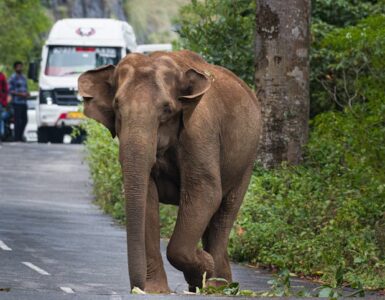Imagine you are walking towards your school, office, market, or any other facility and you have to cross the road.
In most cities, you will simply walk towards a point on the road marked with black and white lines. The markings enable pedestrians to cross the roads safely because vehicular traffic must stop to let them do this.
The black-and-white lines in many parts of the world are called Zebra Crossings.
They are part of urban infrastructure in almost all countries worldwide and it is hard to tell if any other public service is named after an animal.
Zebras are an incredible animal in our biodiversity; with those black and white stripes, they make a captivating and incredible sight.
These animals are native to Africa and are found in the sprawling savannas and grasslands of the continent. They belong to the Equidae family, which also includes Horses and Donkeys.
Let us know some interesting aspects of Zebras.
Habitat and Physical Features
Africa is home to three different species of zebra – the Plains Zebra, Grevy’s Zebra, and Mountain Zebra.
Grévy’s Zebras are the largest of all three species and can weigh up to 450 kg. The Grevy’s zebra can be found in dry, semi-desert areas of Kenya and Ethiopia. Interestingly, they are named after Jules Grévy, a 19th-century French president who received one from Abyssinia as a gift.
The plains Zebras are the most common zebras found in the African continent. They can weigh up to 400 kg and are found in the grasslands and woodlands from Ethiopia to South Africa.
The Mountain Zebra are the smallest and can weigh up to 350 kg. They are found in hilly habitats of South Africa, Namibia, and Angola.
Just like their horse relatives, Zebras are pretty fast runners as they can run up to 65 kmph.

Reason for Black and White Stripes
The black and white stripes on zebras might look the same to us from a distance, but just like a human’s fingerprint and Giraffe’s spots, each Zebra stripe is unique to the animal. Another interesting facet of the Zebra’s skin is that it is black with white stripes.
Nevertheless, the reason for black and white stripes on zebras has been a subject of debate and experiments from last many years. Many scientists and experts have done experiments to understand the unique colour combinations of these animals.
One theory suggests that the unique stripes help them recognize each other.
This is specifically applicable in the case of a mother zebra and her newborn foal. After the birth of the baby zebra, the mother can move from the herd as it is believed that the mother wants the foal to imprint her patterns and not another individual. If the foal does not recognize the mother’s patterns it will not be able to survive without the milk that she provides.
The black-and-white patterns could also serve as a camouflage to confuse predators. As zebras generally stay in large groups called dazzle, their stripes make it difficult for predators to identify them.
The dazzle of zebra refers to an optical illusion that occurs when a group of zebras run or move quickly together. Thus making it harder for predators to pick out individual zebras as prey.
Another theory mentions that stripes help zebras in temperature regulation. The black absorbs heat and white reflects it which helps them graze for hours in hot Savannah weather.
A more recent experiment has found that zebra stripes are a form of pest control as they protect zebras from biting flies.
Food
Zebras are herbivores who spend most of their day eating grass, leaves, shrubs and twigs. They are constantly on the lookout and can travel miles to find food to eat and water to drink.
Sometimes if there is a paucity of their food, zebras can participate in mass migrations in search of fresh grass and water.
Social Behaviour
Zebras are social animals who can be found together going about their business in large groups. They produce sounds and display different body language to communicate with each other.
While zebras might look docile, they can sometimes be very aggressive and show their anger by kicking. Probably, that is the reason zebras have not been domesticated like horses and donkeys.
Male zebras often engage in fierce battles to win over females.
The gestation period of a zebra is about 12 months. When the baby zebra, called foal, is born, they have reddish-brown stripes which gradually become darker and change to black as they grow. The foal takes less than half an hour before it can walk, drink, and follow its mother.
Another interesting aspect of Zebras is that they can take naps while standing up, by locking the joints in their knees. When they need deep sleep, they can lie down on the ground.
How do Zebras help in the Ecosystem?
Zebras by feeding on grass, shrubs and twigs play an important role in gardening and pruning the grasslands. In addition, they sometimes eat the seeds of the plants which are then excreted out in their droppings.
Thus these herbivores Zebras help to maintain the balance in the ecosystem and promote new growth.
Zorse
Do you know the name given to a cross between Zebra and Horse? The animal is called a Zorse where a male Zebra (stallion) with a female Horse (mare) are cross-bred to produce an animal that looks more like a Horse than a Zebra but has stripes.
Culture and Tourism
In African indigenous communities, zebras are featured in myths, stories, and traditional ceremonies.
The black and white Zebras are a popular attraction for tourists visiting African grasslands, thus providing a revenue source of income for the local economy.
Threats
In the wild, the main threats for Zebras are lions, hyenas, leopards, and cheetahs, however, their biggest threat is humans.
Human-induced actions like hunting and habitat destruction are causing a steep decline in zebra populations. Moreover, climate change is aggravating the problems as extreme weather conditions and draughts make it hard for these incredible creatures.
International Zebra Day
International Zebra Day is observed on January 31 every year to raise awareness about the three zebra species, their threats and conservation efforts.
The day is conceptualised by conservation organizations, such as the Conservation Biology Institute and the Smithsonian’s Natural Zoo.
Watch this video on the Change Started YouTube channel to learn about Zebras.






Add comment